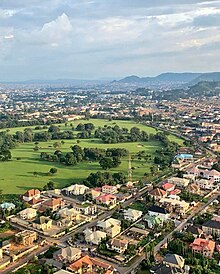
Architecture of Nigeria was historically influenced by environmental conditions as well as social and cultural factors. The coming of missionaries and political changes brought about by colonialism precipitated a change in architectural style and utility of buildings. A Gothic revival style was adopted for early churches built in the colony of Lagos. A one or two-storey timber house building made with pre-fabricated material components and designed with the influence of classic antiquity styles served as mission house for the missionaries. Colonial residents working for the Public Works Department introduced a variant of neoclassical architecture to designs of government buildings and private residencies.
In the local living space, African returnees influenced the adoption of a Brazilian type of building that was to later spread to other parts of the country.
Beginning in the 1970s, a multiplicity of architectural styles were adopted but the influence of the earlier styles is still significant as good number of structures are modified designs of Brazilian type and colonial neoclassical architecture.[1]
- ^ Osasona, Cordelia O. FROM TRADITIONAL RESIDENTIAL ARCHITECTURE TO THE VERNACULAR: THE NIGERIAN EXPERIENCE By. pp. 18–20. CiteSeerX 10.1.1.508.9962.
© MMXXIII Rich X Search. We shall prevail. All rights reserved. Rich X Search
